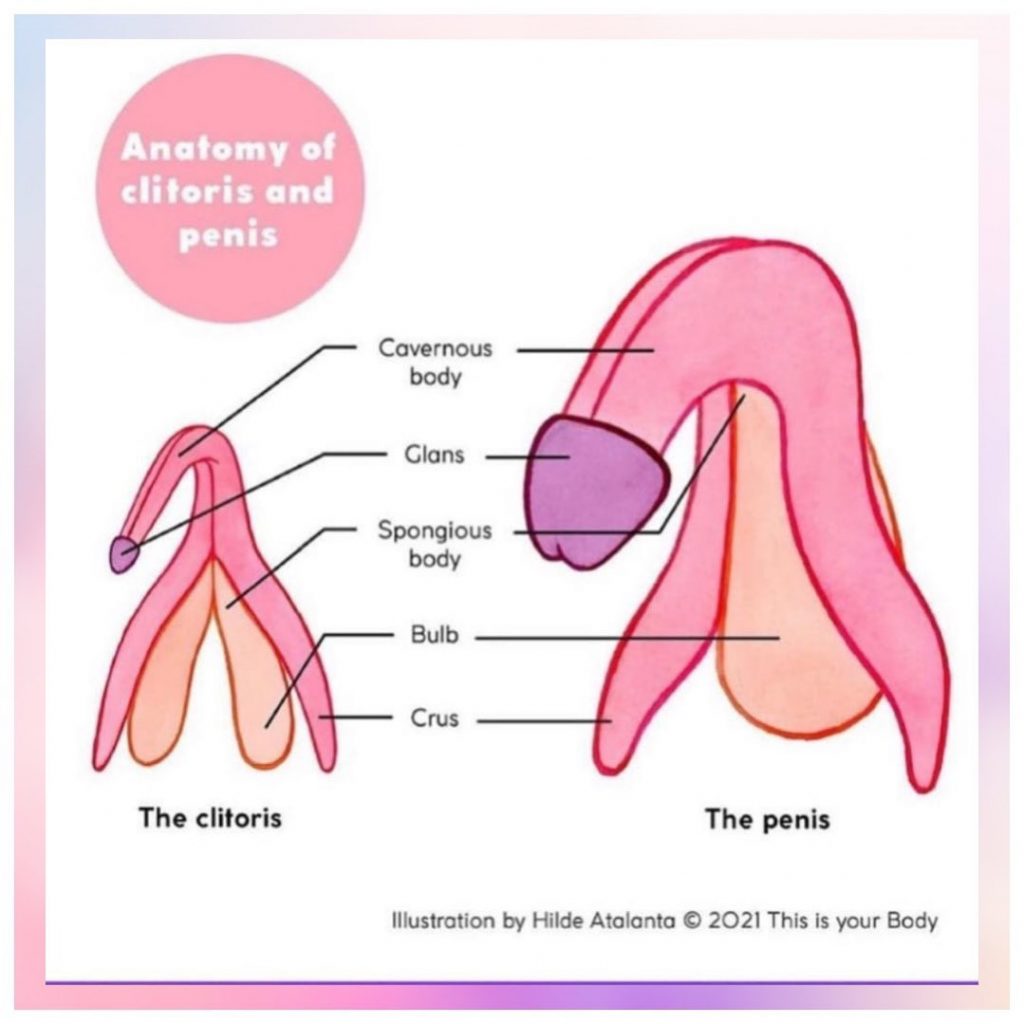Anatomy of the clitoris and the penis
“Both the clitoris and the penis function similarly as sensory organs,” says sex educator Dr. Laurie Mintz. This means they’re both sensitive to touch, arousal and have the ability to give you orgasms. Even so, female orgasms are far more complicated than male orgasms.

In addition, both the clitoris and the penis have corresponding regions. For example, the head of the penis (glans) is similar to the glans of the clitoris, which is the nub where the top of inner lips (labia) meet. This is the visible head of the clitoris. The rest of the clitoris is inside the body, so it’s invisible, unlike the head and shaft of the penis which are external to the body. These videos by sex educator Dr. Paul Joannides give you the Ultimate Guide to the Clitoris and A Woman’s Guide To Men’s Foreskins, explaining more about structure and function of the clitoris and the penis.
The foreskin of the penis and the clitoral hood are related in a similar way. If you pull back the foreskin, it reveals the head of the penis (glans) and the head (glans) of the clitoris. The head of the clitoris can be half a centimetre in size, or much bigger. Its size can vary greatly. The whole clitoris from the tip of the glans to the tip of the crus (leg) is about 10 centimetres long. The whole penis (from the tip of the glans to the tip of the crus) is about 25 centimetres long and is also thicker than the clitoris. Again, sizes vary a lot in each individual.
Anatomical development during pregnancy
For the first six weeks of a pregnancy, all fetuses are female. Everyone begins their development in the womb with a clitoris. At about six weeks, if “a low level of the hormone testosterone [is] released,” the clitoris grows into a penis, says Laurie Mintz. If testosterone is absent, the tissues develop into a vulva (the correct anatomical name for the external female genitals), vagina and the complete clitoris develops, as shown in the image above.
As the fetus is developing in the uterus, the male scrotum (ball sack) originally starts as the outer labia (lips). “In male fetuses, what starts as the outer lips are then fused to make the sack that encases the balls. In female fetuses, the opening between the lips remains and they fill with fat,” forming the outer lips, explains Mintz.
The skin and shaft of the penis are similar to the inner labia and clitoral shaft, respectively. They are called the cavernous body and both become filled with blood when sexually aroused.
The bulb of the penis (the bundle of tissue that forms a visible ridge at the bottom of the penile shaft) corresponds with the clitoral/vestibular bulbs. These are structures of spongy tissue that extend down inside the body, on the inside edge of the crus (legs) of the clitoris. The bulbs also become engorged with blood when sexually aroused.
The crus or “legs” of the penis are formed from the clitoral legs, which sit alongside the vestibular bulbs, extending down long the vaginal opening, inside of the body.
Summary of the anatomy of the clitoris and the penis
- Glans clitoris = head of the penis
- Clitoral hood = foreskin
- Outer lips (outer labia) = scrotum
- Inner lips (inner labia) = skin of the penis
- Shaft of the clitoris = shaft of the penis
- Clitoral bulbs (part of internal clitoris, vestibular bulbs) = bulb of penis
- Clitoral legs (part of internal clitoris, crus) = crus of penis.
On these links you can see more detail about the anatomical development of the clitoris and the penis. Having good sex education frees you from feeling that it’s hard to talk about sex. Knowledge is power.
